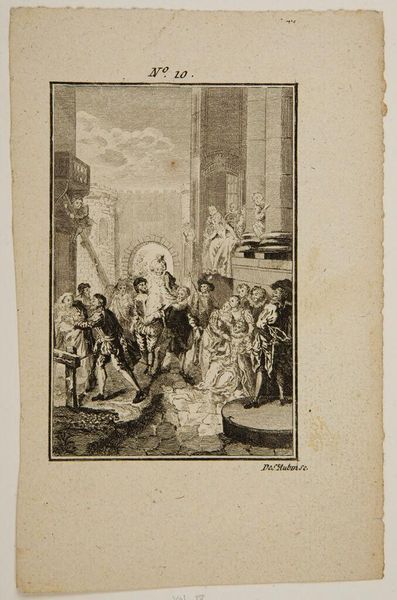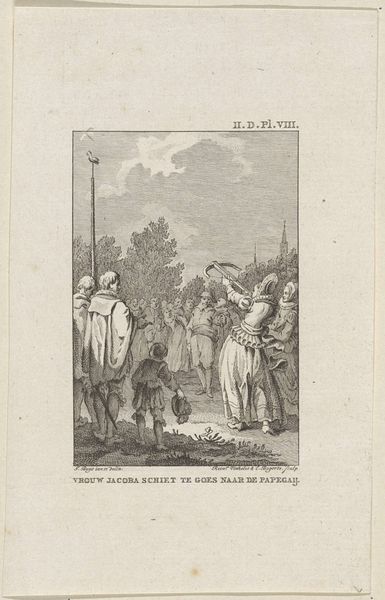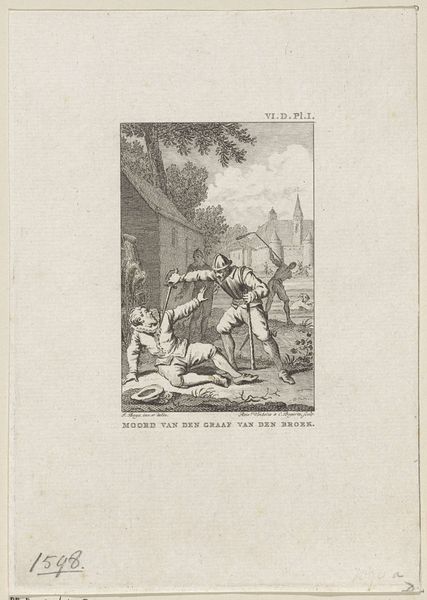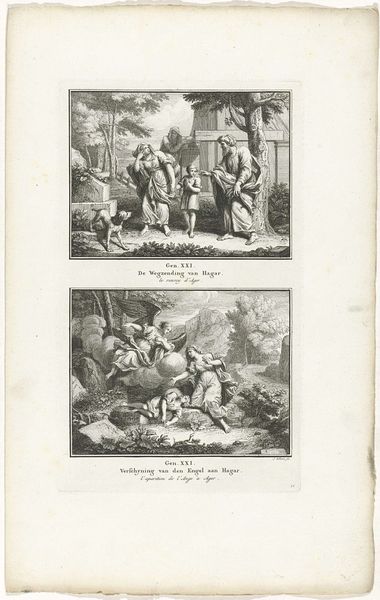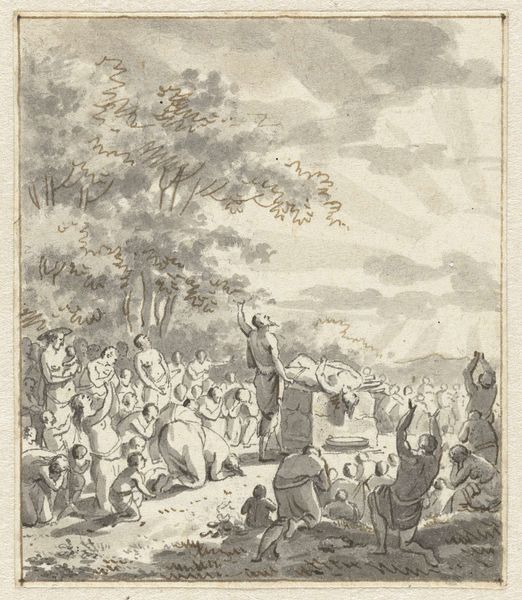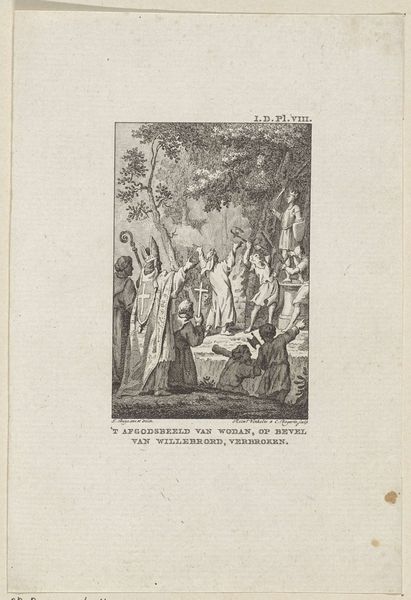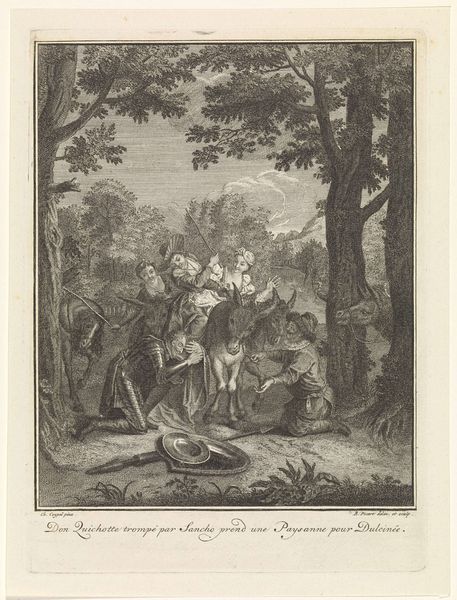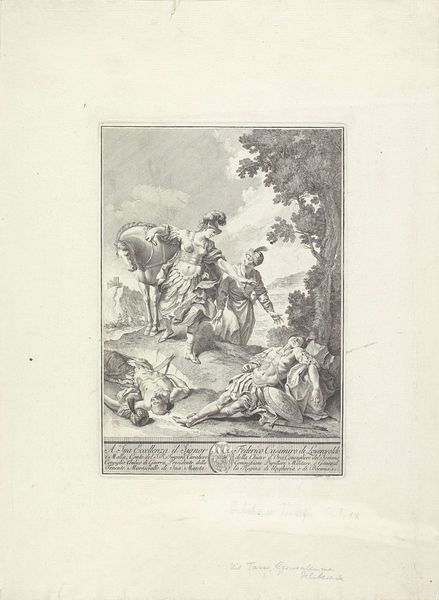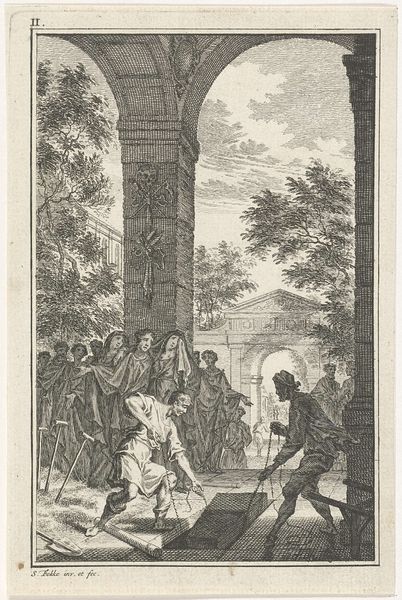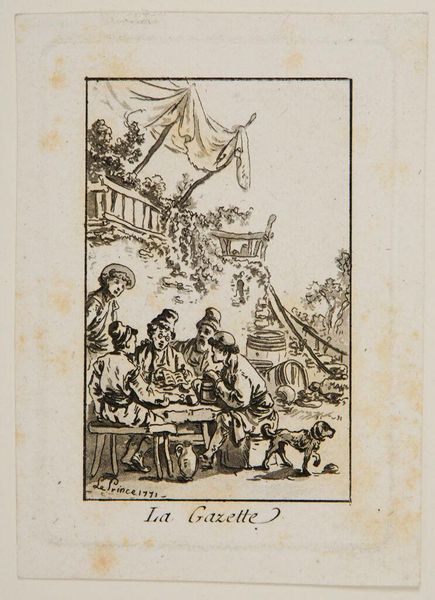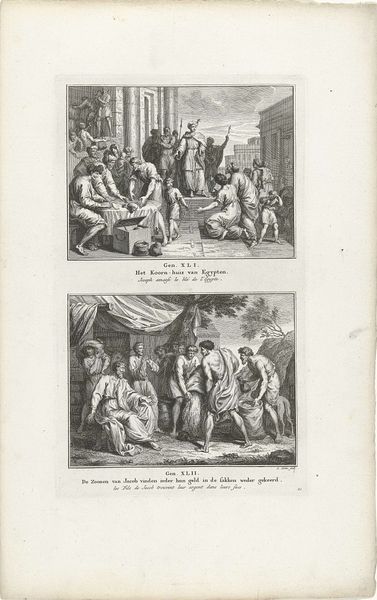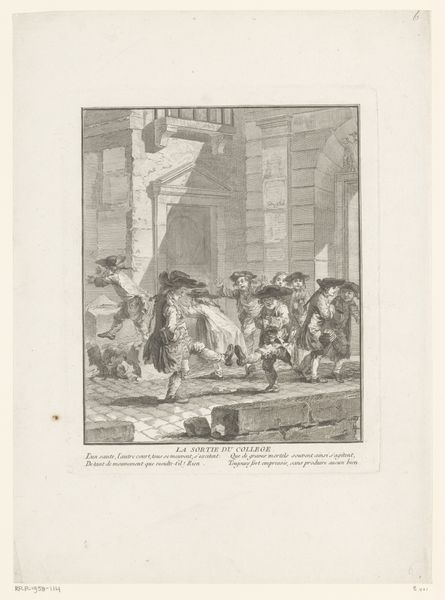
print, engraving
#
baroque
# print
#
perspective
#
figuration
#
line
#
history-painting
#
engraving
Dimensions: height 189 mm, width 126 mm
Copyright: Rijks Museum: Open Domain
Curator: This engraving, "Trojanen bestormen het Griekse kamp," which translates to "Trojans Storming the Greek Camp," by Bernard Picart, circa 1710, at the Rijksmuseum, is intense. Editor: Absolutely, I'm struck by the dynamism—that frantic energy. It's like a chaotic swirl of bodies clashing against each other, all rendered with these really sharp, precise lines. I almost feel a bit overwhelmed by it. Curator: Picart uses that linework to give everything this remarkable textural quality, almost tangible. The detail in the armor, the foliage—it's astounding. And the Baroque love of drama is clear! Think about the story itself. The Greeks are beaten back to their camp, it’s a pivotal moment of reversal during the Trojan War. Editor: Right, and context is everything. This wasn't just a random skirmish; the Trojan War functions as an allegory on so many levels: from the grand narratives of empires to the more personal struggles of identity and displacement. To see the Trojans breaching the Greek fortifications after such a long siege… It speaks volumes about resilience, but also the endless cycles of violence and retribution. It is history rendered by philosophy! Curator: Yes, you feel that exhaustion and the futility too. The light is so uneven across the work, throwing figures into strong relief, really pushing that dramatic edge, while we consider power, and perhaps masculinity. It is certainly, at moments, very masculine! Editor: You can interpret this battle, and how Picart chose to represent it, as a commentary on power dynamics more generally—the colonizer and colonized, the oppressor and the oppressed. Those power imbalances often replicate patriarchal structures too, I think. The details certainly give hints here. Curator: Perhaps. What moves me most is the expression Picart gets into some of the faces, even at this tiny scale, the fear in the fallen soldiers as they’re being overtaken, a few flashes of hope or madness too. That to me is really beautiful and awful all at once. It asks, does that make us better? Is all war madness? Editor: It serves as a somber reminder of the human cost of conflict. I can't look away, it’s horrifying and necessary to reflect on such struggles. Curator: Absolutely, the engraving becomes not just a depiction of a historical moment, but a mirror reflecting our own complex relationship with history and conflict. Thank you for such profound insight, as always!
Comments
No comments
Be the first to comment and join the conversation on the ultimate creative platform.
